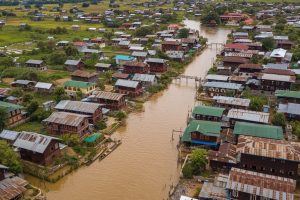Humanitarian aid averted a disaster during the cold winter months, but hunger remains at epidemic levels across Afghanistan. According to the latest Integrated Food Security Phase Classification (IPC) analysis conducted in January and February 2022 by Food Security and Agriculture Cluster partners, including the Food and Agriculture Organization of the United Nations (FAO), the United Nations World Food Programme (WFP), and many NGOs, nearly half of Afghanistan’s population is facing acute hunger.
According to the analysis, the food security situation will improve slightly between June and November 2022, with the number of individuals facing acute food insecurity falling to 18.9 million. This is due in part to the upcoming wheat harvest, which will take place between May and August, as well as this year’s well-coordinated scale-up of humanitarian food assistance, which will be accompanied by greater agricultural livelihood support. However, the analysis warns that benefits will be limited. Unprecedented hunger will continue to threaten the lives and livelihoods of millions of Afghans due to lingering drought and profound economic turmoil.
A small pocket of “catastrophic” levels of food insecurity – or IPC Phase 5 – has been found in Afghanistan for the first time since the introduction of the IPC in the nation in 2011. Because of a lengthy period of harsh winter and awful agricultural circumstances, more than 20,000 people in the north-eastern region of Ghor are experiencing catastrophic levels of starvation.
Richard Trenchard, FAO Representative in Afghanistan, stated that unprecedented quantities of humanitarian aid aimed at improving food security have made a difference. However, the food security situation is critical. Humanitarian aid, as well as the need to reconstruct shattered agricultural livelihoods and reconnect farmers and rural communities to struggling rural and urban markets across the country, remain critical. There will be no way out of this catastrophe unless these things happen.
According to Mary-Ellen McGroarty, WFP’s Country Director and Representative in Afghanistan, food aid and emergency livelihood help are the people of Afghanistan’s lifelines. In just a few months, WFP mounted the world’s largest humanitarian food operation, reaching over 16 million people. To help the local economy, WFP is working with farmers, millers, and bakeries to train women and create jobs. Because the Afghan people would much rather have jobs; women want to be allowed to work, and all girls deserve to attend school. Allowing the economy to operate regularly is the surest way out of the problem; otherwise, suffering will flourish where crops cannot.
Millions of families facing economic losses and food difficulties will benefit from the approaching harvest. For many, though, the harvest will only provide temporary relief with little chance of recovery. Afghanistan’s wheat supply, food staples, agricultural inputs, and gasoline costs are all under strain as a result of the Ukraine conflict. Seeds, fertilizer, and irrigation water are few, labor possibilities are sparse, and massive debts have been accrued to buy food in recent months. FAO and WFP continue to expand their programmes throughout the country. WFP has provided emergency food assistance to more than 16 million people so far in 2022, and it is boosting local markets by engaging with retailers and local suppliers. WFP continues to invest in people’s livelihoods by providing skills training and climate adaptation initiatives, allowing families to cultivate their land and raise their own food.
FAO continues to expand its assistance to farmers and herders in rural areas, with the goal of assisting more than 9 million people by 2022 through a variety of interventions that support crop, livestock, and vegetable production, as well as cash transfers and the rehabilitation of critical irrigation infrastructure and systems. Agriculture support is a cost-effective and strategic intervention that has a significant short-term impact as lifesaving assistance while also laying the groundwork for long-term recovery and development.







